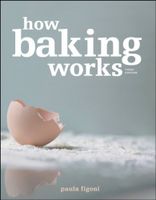Label
All
0
Clear all filters
🔥 Try our grilling cookbooks and save 25% on ckbk membership with code BBQ25 🔥
Questions for Review
Appears in
By Paula Figoni
Published 2003
- What units make up all polysaccharides? Describe the difference between starch and inulin in the type and number of units each contains.
- What units make up all proteins? Which common thickening and gelling agent is a protein?
- Describe the difference between thickening and gelling.
- Name three sources of gelatin. Which of these is the main source of gelatin used in foods?
- Describe how most food-grade ground gelatin is produced.
- Describe how sheet gelatin is produced.
- What is meant by the “Bloom rating” of gelatin?
- How is the Bloom rating of gelatin measured?
- What does it mean to “bloom gelatin”? Why is it done?
- How is powdered gelatin typically bloomed?
- How is sheet gelatin typically bloomed?
- Why must fresh pineapple juice be heated before it can be added to gelatin?
- How do acidic ingredients, such as lemon juice, affect gel strength?
- Name a gum extracted from each of the following vegetable products: seaweed, apple peel, sap from a tree, endosperm of a seed.
- Which gum is particularly useful for thickening and gelling fruit products?
- Which gum is sometimes used as a gelatin substitute and is sometimes called vegetable gelatin?
- What thickening and gelling agent is extracted from the endosperm of cereal grains?
- Give examples of cereal starches and root starches.
- What two reasons could explain why starches differ from each other in properties (gel strength, clarity, flavor, stability, etc.)?
- Describe the main differences in properties between a typical cereal starch and a root starch.
- Why should cornstarch not be used to thicken pastry cream that will be frozen? What starch is the best choice to use instead?
- What is the main reason for using a modified food starch?
- What are the two main reasons for using an instant starch?
- How should an instant starch be used so it is less likely to clump?
- Draw the process of starch gelatinization. Label your drawings, and be sure to show the major differences in raw, swollen, and degraded granules.
- Describe what happens to starch granules as they are heated in the presence of water, and explain how thickening and gelling changes in the process.
- Which is more likely to require more heat to gelatinize: cornstarch or a root starch?
- You switch from cornstarch to tapioca as a thickener in a fruit sauce. The sauce becomes unacceptably stringy when it cools. What should you do differently next time to prevent this from happening?
- Does sugar speed up or slow down the process of starch gelatinization?
- Does acid speed up or slow down the process of starch gelatinization?
Become a Premium Member to access this page
Unlimited, ad-free access to hundreds of the world’s best cookbooks
Over 160,000 recipes with thousands more added every month
Recommended by leading chefs and food writers
Powerful search filters to match your tastes
Create collections and add reviews or private notes to any recipe
Swipe to browse each cookbook from cover-to-cover
Manage your subscription via the My Membership page
Monthly plan
Annual plan
Advertisement
Advertisement
The licensor does not allow printing of this title


